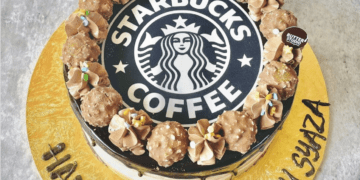How Different Cultures Make Simple Meals Taste Amazing

Ever noticed how the same basic ingredients can taste completely different depending on where you are? A simple bowl of rice, a slice of bread, or even a basic soup can have a new flavour just because of how it’s prepared. That’s because every culture has its way of cooking. Some love bold spices, others rely on fresh herbs, and some let flavours develop slowly over time. But how do Different Cultures Make Simple Meals Taste Amazing?
It all comes down to technique, tradition, and a bit of creativity. You don’t need fancy ingredients to make something taste amazing; it’s all about how you use what you have! With that in mind, let’s see how different cultures make the simplest meals into something unforgettable.
Spices and Seasonings: The Heart of Flavour
One of the biggest reasons food tastes different from one place to another is the way spices and seasonings are used. Take a simple chicken dish, for example. In the U.S., you may season it with salt, pepper, and maybe a little garlic. But in India, that same chicken could be coated in cumin, turmeric, coriander, and chilli powder. This gives it a deep, rich flavour.
In Thailand, food often combines sweet, sour, salty, and spicy flavours all in one dish. A simple stir-fry might have fish sauce for saltiness, lime for acidity, palm sugar for sweetness, and chilli for heat. That balance is what makes Thai food so addictive.
Then there’s Mexico, where spices like cumin, oregano, and smoked chili peppers give even the simplest meals a bold, smoky taste. A basic taco with just a few ingredients—meat, onion, and cilantro—can be packed with layers of flavor just because of how the meat is seasoned.
Cooking Methods That Bring Out the Best in Ingredients
The way food is cooked also makes a huge difference. In Japan, for example, less is more. Ingredients like fresh fish, rice, and vegetables are often prepared with minimal seasoning so their natural flavours shine through. That’s why sushi is often just raw fish with a little soy sauce and wasabi—it doesn’t need anything else.
On the other hand, in places like France and Italy, slow cooking is key. A simple tomato sauce in Italy isn’t just tomatoes and salt; it’s cooked with olive oil, garlic, and fresh basil, letting the flavours blend. A dish like beef stew (boeuf bourguignon) in France, takes hours to cook, allowing the meat to become tender and the flavours to develop deeply.
Grilling is another cooking method that completely transforms food. In Argentina, they take grilling seriously. A simple piece of meat cooked over an open flame with salt turns into something mouthwatering because of the smoky, charred flavour. If you’re looking for a unique way to try grilled seafood, check out this Kiwi Marinated Octopus Recipe. It uses kiwi to tenderise the octopus while adding a slightly sweet and tangy taste.

The Power of Fresh Ingredients
Some cultures rely more on fresh ingredients than heavy seasonings. In Mediterranean countries like Greece, Italy, and Spain, meals are often made with fresh vegetables, herbs, and olive oil. A Greek salad, for example, is just tomatoes, cucumbers, onions, olives, and feta cheese—no heavy dressing needed. The freshness of the ingredients is what makes it taste incredible.
Similarly, Vietnamese food is known for its bright, fresh flavors. A bowl of pho (noodle soup) might have a rich broth, but what really makes it stand out is the fresh herbs—basil, cilantro, and lime—added right before eating. That fresh touch makes all the difference.
The Magic of Fermentation
Fermented foods are another way cultures create deep flavors from simple ingredients. Korea is famous for kimchi, a mix of cabbage, garlic, chili, and other seasonings that’s left to ferment, giving it a tangy, spicy kick.
In Germany, sauerkraut (fermented cabbage) is a common side dish that adds a sour, crunchy contrast to heavier foods like sausage.
Even bread is affected by fermentation. In Ethiopia, injera (a spongy flatbread) is made from teff flour that ferments before being cooked, giving it a slightly sour taste that pairs perfectly with spicy stews.
Mixing Sweet and Savoury
One thing some cultures do really well is mixing flavors you wouldn’t expect. In the Middle East, for example, it’s common to combine sweet and savory ingredients in the same dish. A simple rice dish might have cinnamon, nuts, and dried fruit, giving it a unique blend of flavors.
In the Philippines, adobo is a popular dish where chicken or pork is cooked in a mix of soy sauce, vinegar, garlic, and sometimes even a little sugar. The result is a balance of salty, tangy, and slightly sweet flavors that work perfectly together.
And in Sweden, they even eat meatballs with lingonberry sauce—a slightly tart, jam-like topping that balances the richness of the meat.
How Simple Foods Become Comfort Foods
Every culture has certain foods that feel like home. In the U.S., mac and cheese or a grilled cheese sandwich are classic comfort foods. A warm bowl of miso soup in Japan gives that same cosy feeling.
In Italy, pasta dishes like spaghetti carbonara are made with just a few simple ingredients—eggs, cheese, black pepper, and pancetta—but the way they come together makes it the ultimate comfort food.
And in West Africa, jollof rice—a dish made with tomatoes, peppers, and spices—is a staple that’s simple but full of rich flavor.
Why Simple Meals Are Often the Best
At the end of the day, you don’t need a long list of ingredients to make something taste amazing. It’s all about how you use them. Whether it’s the spices in Indian curry, the slow-cooking methods in France, or the fresh ingredients in Mediterranean food, different cultures have found their own ways to make simple meals unforgettable.
Next time you cook, try taking inspiration from another country’s cooking style. You might be surprised at how much a small change—like adding fresh herbs, trying a different spice, or using a new cooking method—can completely transform a dish.
This blog post is part of ‘Blogaberry Dazzle’ hosted by Cindy D’Silva and Noor Anand Chawla.









